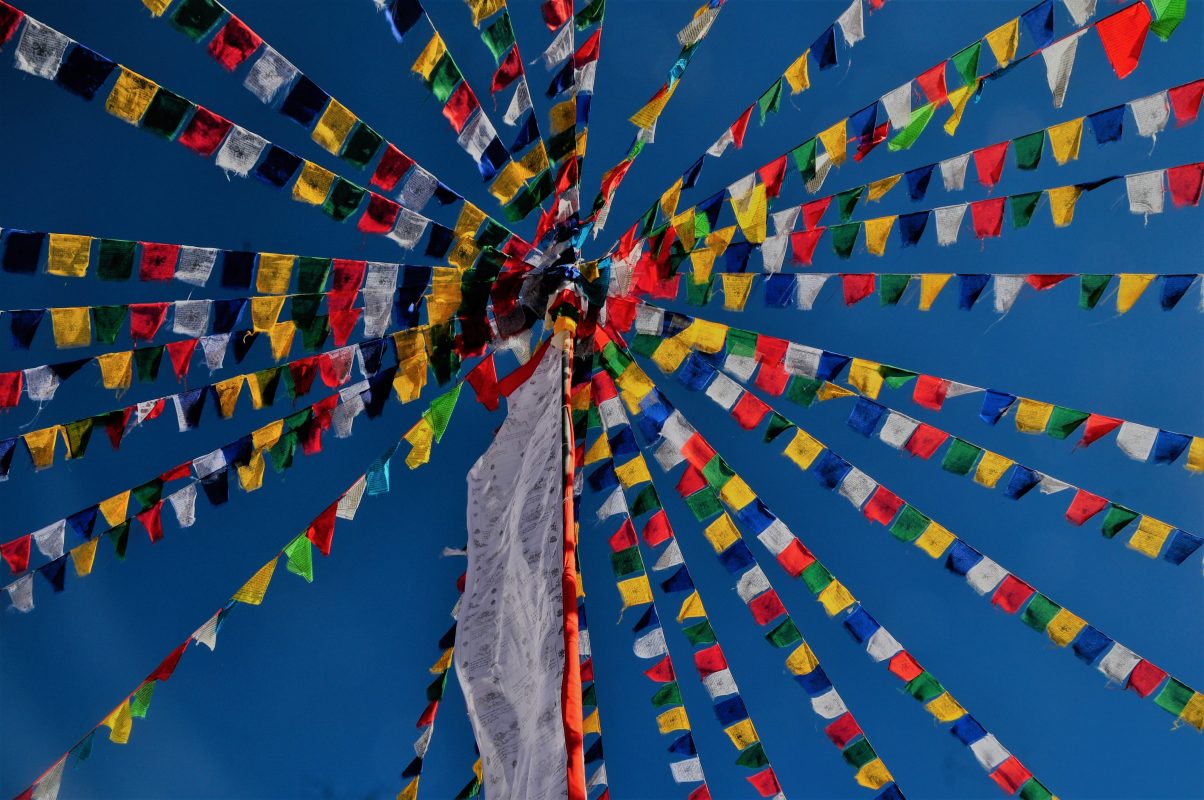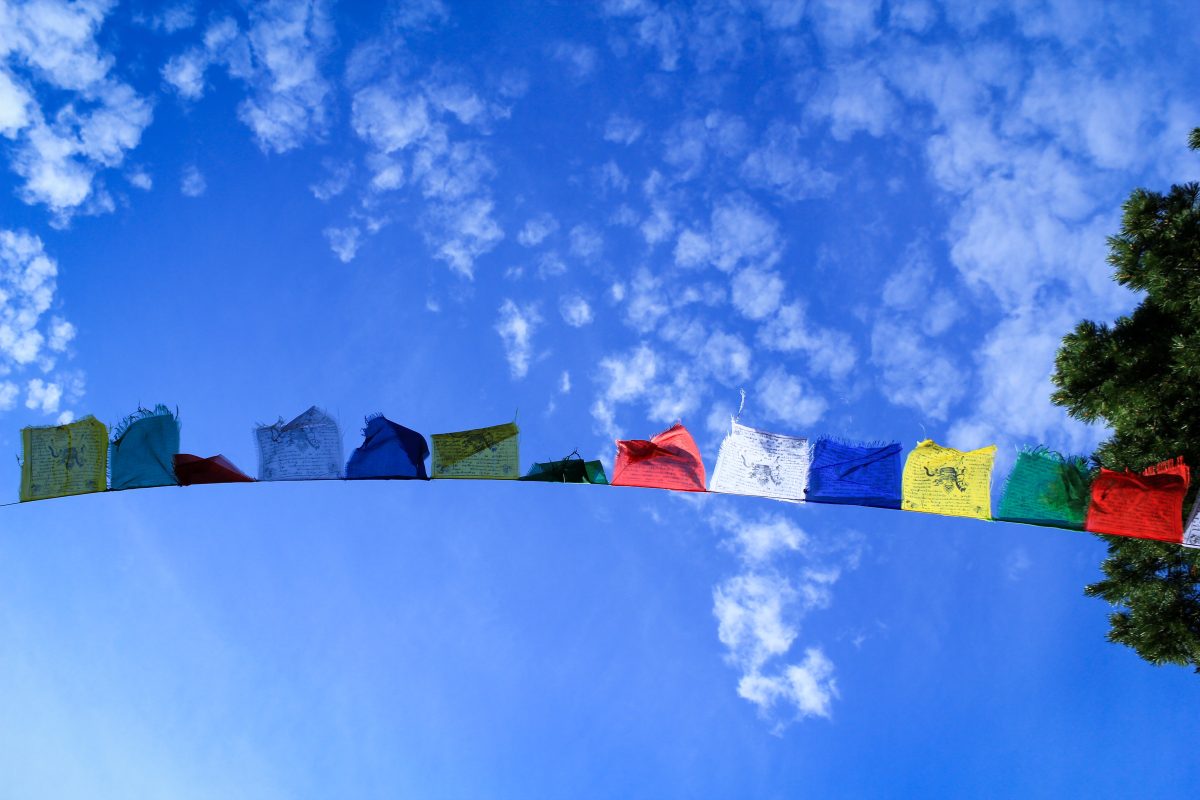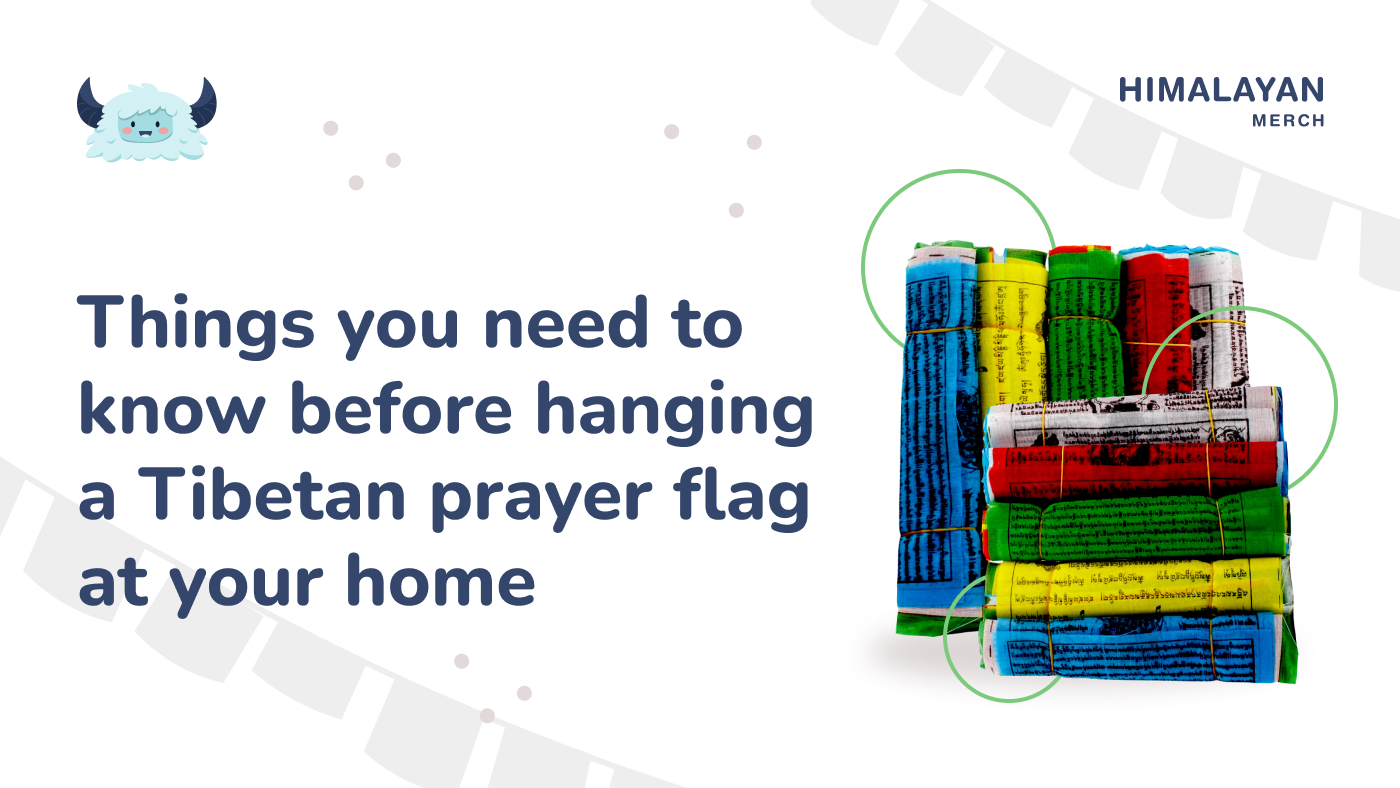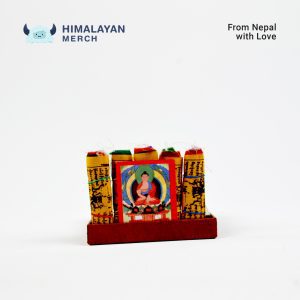Uncategorized
Things To Know Before Hanging Tibetan Prayer Flags
Tibetan prayer flags are colourful rectangular cloths with various symbols and mantras traditionally handpainted or printed on them. You can easily find them strung about on strings on trails around stupas and even the Himalayas. The prayer flags that you see are a distinctive feature of Tibetan Buddhism. With a slight wind, they flutter and transmit good luck and harmony in the atmosphere. The flags are inscribed with auspicious symbols, invocations, symbols, and mantras. They are meant to be placed high where they can get natural wind and bring happiness and fortune to all living beings.
Today, people string them in outdoor areas or even inside their homes all over the world. These are not just some colourful accessories. They carry a deeper meaning and even bigger significance on Buddhism. There are two different kinds of prayer flags; the horizontal ones are called Lung Ta and the vertical ones are called Dar Chog. Lung Dar means ‘Wind Horse’ in Tibetan. Dar means to increase life, health, wealth, and fortune, and Chog means all sentient beings.

A brief history of Tibetan Prayer Flags:
According to Wikipedia, Nepali Sutras (mantras), originally written on cloth banners, were transmitted to other regions of the world as prayer flags. In Tibet, the tradition of hanging flags began more than 2000 years ago. At that time, native people made flags to honour their gods of Bon, their shamanistic religion. When Buddhism was introduced to Tibet in the 7th century, it more or less took the place of Bon. The teachings and prayers of Gautam Buddha were painted in cloth flags and hung around to bless the world along with the wind. Buddhist monks who made these flags have a lot of contributions to the widespread of these flags outside Nepal.
Millions of Tibetan people dedicated their lives to Buddhism. They practised this compassionate and loving religion and honoured Lord Buddha. These flags became known as Tibetan prayer flags.
With the invasion of China in 1959, millions of Tibetans, mostly monks, and nuns were killed, monasteries destroyed, and people robbed of their homes. People, including the 14th Dalai Lama, had to flee their country and live as refugees around the world. The prayer flags became a reminder of a nation of kind and gentle nation of people devoted to Buddhism. Many places in countries like Nepal and India, became major Tibetan refugee sites. Such refugee communities in these host countries continued to carry the messages of Tibetan Buddhism. The flags now commemorate the significance of Tibetan Buddhism and Tibetan refugee settlement.
What you should know about Tibetan Prayer Flags
If you want to hang prayer flags around your house or office or wherever you should at least know these things about prayer flags.
- Symbols and prayers

Prayer flags are filled with hand-painted or printed symbols and mantras. The centre of a flag traditionally features a Lung Ta (powerful or strong horse) bearing three flaming jewels on its back. The three flaming jewels symbolize the Buddha, the Dharma (Buddhist teachings), and the Sangha (Buddhist community).
Around the Lung Ta are various versions of around 400 traditional mantras, each dedicated to a particular deity. In addition to these mantras, prayers for long life and good fortune for the person who mounts the flag are also often included.
Four powerful animals; the dragon, the garuda, the tiger, and the snow lion are also featured on the four corners of the flag.
- The color and order of the flags are symbolic
Tibetan prayer flags come in a set of five; one in each colour that represents the elements of nature.
- Blue symbolized the sky and the space
- White symbolizes the air and the wind
- Red symbolizes fire
- Green symbolizes water, and
- Yellow symbolizes Earth
The order in which they are arranged is also specific; left to right with blue, white, red, green, and yellow. If they need to be hung vertically, the blue flag should stay at the top and the yellow one at the bottom.
According to traditional Tibetan medicine, the balance of the five elements produces health and harmony. They are also said to represent directions – North, South, East, West, and Center.
- The Prayer Tag (OM MANI PADME HUM)
The prayer tag OM MANI PADME HUM carries a deep religious meaning. OM is the sacred syllable in Hinduism and Buddhism. It signifies the ultimate reality which is consciousness. MANI means jewels and symbolizes one’s desire to become enlightened. PADME means lotus, which symbolizes wisdom. And, HUM refers to one consciousness where wisdom and method become one. In seed syllables, HUM is the seed syllable of Akshobhaya- the immovable, the unfluctuating, that which cannot be disturbed by anything.
- Tibetan flags should never touch the ground
There is a reason why they are attached to strings and ropes and hung around trails and high places. The flags are sacred things to Buddhist people. The flags contain prayers and auspicious symbols. So, they shouldn’t be placed on the ground, and it is considered disrespectful to step on and cross over them.
- The flags carry positive energy
There is another reason why the flags are kept at a height; so that they can flutter with the wind. It is said that they create positive vibrations and carry good luck, blessings, and prayers with the wind.

- Hanging prayer flags
It is said that when prayer flags are hung on inauspicious days, they transmit bad luck for as long as they are flying. So, it is important to choose what day to hang the flags. The day of the Chinese New Year is considered one of such good days. Generally, Monday is a good day to hang prayer flags, and Friday is even better. People should pick one such warm, sunny, or windy morning from the Tibetan calendar.
- Disposing of prayer flags
When prayer flags are old and worn out, you should not just throw them away. The flags are sacred. They should be burned as people believe the smoke will carry prayers and blessings to heaven. Properly hanging and disposing of prayer flags is a way to pay respect to Tibetan culture and Buddhist practices.
- Fading colors are considered auspicious
When the colours of prayer flags fade, it is actually considered a good thing. It means that the flags have spread their prayers and blessings with the wind.
- Prayer flags should be hung with good intentions
Hanging prayer flags is more about the world than one individual person. No one should hang flags for personal and self-centred reasons. One should not consider benefiting from the flags alone. Hanging flags is for all living, sentient beings. You don’t have to be Buddhist to hang the flags, but you certainly need good intentions.
Tibetan prayer flags are colourful, beautiful, and hold a big religious significance. So, the next time you catch sights of these flags while trekking and climbing the Himalayas, or visiting a monastery or stupa, you know what you are seeing. You know now that these flags strung along in high passes, and villages with a stunning mountainous backdrop aren’t just there for decoration. They are tributes to a lost nation, the rich Buddhist religion and its teachings, and the practices of compassionate and kind people who have devoted their lives to Buddhism over all these centuries.
Check out the collection of Prayer Flags at our website himalayanmerch.com !






